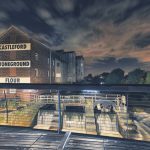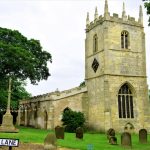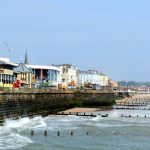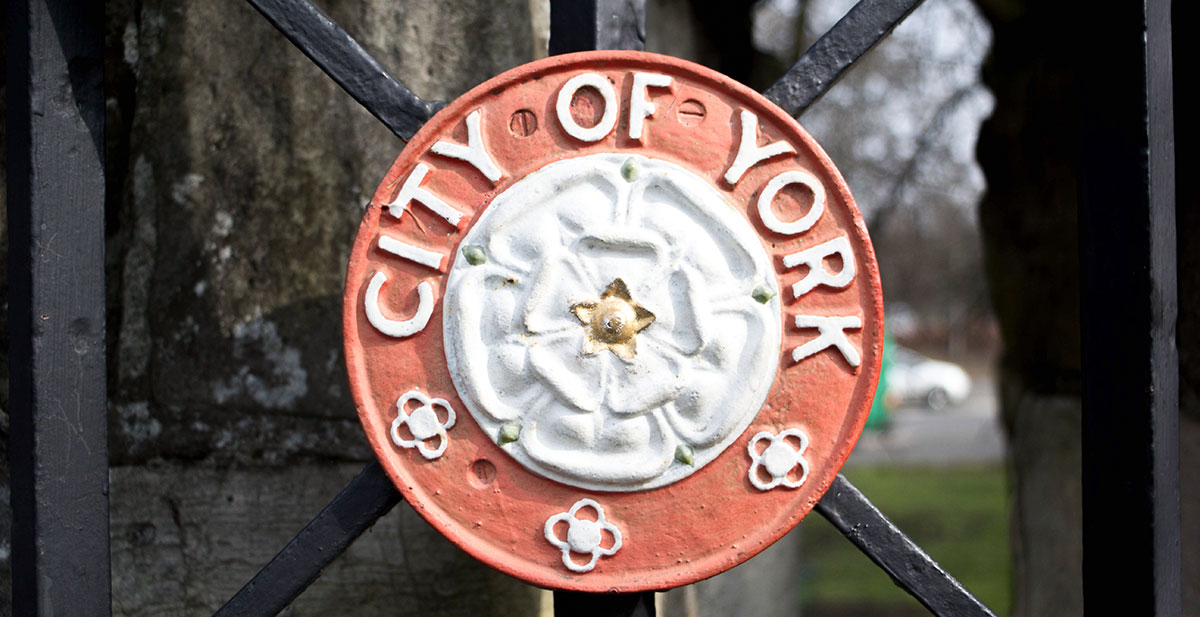
One of Britain’s oldest, finest cathedral cities.
Somewhere near the confluence of the River Ouse and situated in its own historic county, York is one of England’s treasures. This formerly fortified town is one of few which still has its original city wall intact. Asides from the pleasure of walking the full way around the town proper, there are many other upsides to being in York for a holiday.
Let’s examine some of the history surrounding York and then talk about the attractions you might find there. Our tour will include both York trivia and famous faces. Stick it out to the end and we’ll even tell you how to get there.
Early History of York
York has been around since Mesolithic people first settled here. The Mesolithic period rand from 10,000 BC to 8,000 BC – and that’s when the area of York was first settled. After this and before the Romans officially founded the town of Eboracum, later to become Jorvik in the Danish tongue and then reduced to “York” over the years, the Brigantes tribe were the ones who occupied this mass of England. To commemorate this, the Archbishop of the Cathedral of York still signs his name with an Ebor at the end.
Despite all this earlier activity, the Romans moved into the region of Yorkshire circa 71 AD. When they came, they made alliances with several of the clans so that they would pay tribute to Rome and be part of their rule (see TV show “Britannia”). The Brigantes tribe was one of these amalgamated clans. However, they didn’t suffer Roman rule for long. As soon as they started replacing Gods it was time to turn hostile.
The 9th Legion was sent north to dispatch the resistance and built a wooden fortress above the Ouse so that they could execute their control. The 6th legion and the 9th legion would also be stationed here for a while, showing its importance as a strategic position. The walls were even built in stone, that’s how long it was needed for. The people of then-York did not go quietly into the sweet night.
In 71AD the Romans finally turned their fortress into a real town. Initially, it covered 61 acres of land and housed some 6k troops. The original fortress is underneath York Minster. The town was incredibly important to the Romans. Several emperors stayed here until the Romans retreated in the 4th century. For 400 years they used York as the capital of the rest of Britain that could not be reached from London. It would be the base from which legions headed north to the frontiers of Alba. The soldier’s garrisoned there attracted all types of crafters, from house and boat builders to smiths and brewers. The Romans built the wall in the 300s, but they were completely gone a hundred years later.
York Reclaimed
King Edwin of Northumbria reclaimed York circa the 600s. He built a minster and appointed a Bishop here. It is thought that he made it his primary city and even perhaps built his palace here. This was enough to kickstart the town’s growth into the 8th and 9th centuries. Pottery was made here, and weekly markets allowed traders to buy and sell. The population in post-Roman York was about 2,000 people – substantial for a town of the time. It even had its own school in 627 AD.
The Viking invasion and conquering of Yorkshire and most of the rest of England in 866, led to the Danes holding York and shortening its name. Ivar the Boneless and Halfdan both attacked the town on All Saints Day. Smiths worked here making arm rings and weaponry, wool was dyed and woven here, and pottery was fired. Combs were carved here out of bone. The crafters came to live on Cooper Gata, now Coppergate. The Danes wouldn’t have been around later than the 11th century, at the end of which the Normans invaded and the Anglo-Saxon-Roman-Danish people of York had a population of about 10,000 people.
Under Viking rule, York became a massive river port and trading centre. The town had its own mint, and the population was said to have rivalled London. It was part of the Viking trading routes all over Europe and remained thus until 954 when King Eadred unified England.
Rebellion
York was part of the rebellion against Norman rule in 1069, three years after the invasion. The castle was overrun by the people of York and the Normans there were killed. In retaliation, King William retook York and sacked it. He then built another castle to keep tabs on the first castle and its people. This time period is known as “The Harrying of the North” and it led to the ultimate submission of the English to Normandy.
By the time the Domesday Survey was conducted in 1086, York was listed under 12 separate owners and was still a large city. 10 of those owners were the King, which shows how many landlords were evicted and replaced with the conquering forces. The two other owners were the Bishop of York, who owned 60 acres of meadow and 17 teams to plough it, and Richard, son of Herfast, who made 1 pound and 10 shillings a year from his share of York.
Fun Facts about York
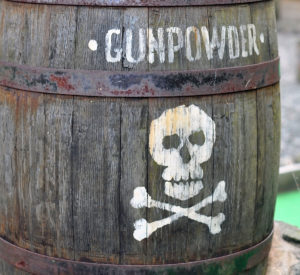
Guy Fawkes of the Gunpowder Plot fame was born in York in 1570
This city had so much early history that we need a break already. We’ll get to medieval times in a moment. For now, let’s review some of the coolest facts about York that you can bring up at parties:
- York’s one of Britain’s most haunted places. All that history racks up the ghosts. The spirits of Roman soldiers are said to frequent the city with a total of 500 ghosts reported all over[i].
- The Shambles in York is thought to be the origin of the word. It is a narrow street where the butchers used to live, making it messy with blood in the gutters. The alley is so close that the houses overhead almost touch.
- Guy Fawkes was a York man, and he went on to try and blow up the houses of parliament. Some say he was the last honest man to ever enter Westminster.
- York is home to the largest Food Festival in the UK. It is held annually in September.
- Excavation’s underneath York Minster have revealed the pillars and stones of the original Roman settlement.
- It is thought that there are enough pubs in York to go to a different one, every day of the year. We’re not sure of the truth of this but we are ready to try it out.
A town so steeped in years was likely to have great gossip points, but we didn’t expect 365 pubs and 500 ghosts. York might be one of our favourite English towns, ever.
Twinning
- Dijon, France, since 1953
- Münster, Germany, since 1957
- Nanjing, China, since 2016
York During Medieval Times
York’s medieval period started with a massacre. The first Jews in England are said to have arrived with the Normans, which naturally made the native English people hate them from the offset. This xenophobia spilt over into several massacres where the Jews were chased from cities. In the case of York, they had it worse. The Jews were rounded up and chased, taking shelter in the castle that had previously seen the massacre of the Norman invaders. The Jews were surrounded and eventually surrendered. The people of York killed them anyway. Somewhere between 150-500 Jewish people were killed in York alone. It is said that the crusaders preparing to leave caused religious fervour.
The town didn’t even get its first real charter – permission to hold a market and annual fair – until 1215. By this point, it was already over 1000 years old. The town became a major cloth manufacturing centre with wool the primary focus. When Edward I invaded Scotland in the 1300s, it was York that he operated out of. At the end of this century, York was the site of several uprisings during the peasant’s revolt. Richard II then added a second charter in 1396 as a reward for the town’s contribution to the war effort. The Black Death hit York hard 1349 when the population was an estimated 13k. It would fall off to 10k before the 16th century.
Dissolution of the Monasteries
The downfall of this popular period for York started around 1539 when Henry VIII dissolved the monasteries. Although a Cathedral town, York would have lost many friars and its hospital. When St Mary’s Abbey was dissolved, the king established a council to keep control of the North, where several Catholics were unhappy. York Guildhall was erected in 1453 with the Minster being rebuilt in 1472. St Williams’ College was also added in 1461, adding to the city’s value as a pilgrim town.
By 1600 the population was 12k, but plague struck many times. In 1550, 51, 1604, 31, and 45. York’s significance as a religious centre waned as Henry VIII dissolved about half of the churches in town. Around the same time, the wool production and the cotton-weaving trade both tapered off. It declined as a port town due to competition from Hull.
In 1642 the civil war saw York loyal to the king and besieged by Parliamentarians. A Royalist army came to save them but was defeated at Marston Moor. The town was forced to surrender. Piped water didn’t come to York until the end of the 17th century. By the time of the industrial era, it had around 13k people.
Famous People from York
Some of the people you might meet when walking around York include:
- Joseph Rowntree and Benjamin, his brother, were York-born. You won’t meet them in Tesco, but they did start a famous confectionery brand from these streets.
- Sir Francis Drake is a historical figure from York.
- Several footballers, including Jack Clark, Sam Byram, Tom Allan, Ben Godfrey, and Lee Grant.
- Several Cricket stars, including Lauren Winfield, Tim Walton, Nick Thornicroft, and Tom Loten.
- Loads of famous writers, including Matt Haig, Alison Hume, W. H. Auden, and Kate Atkinson.
- Some bands, like Shed Seven, Elliot Minot, and the Redskins.
- Dame Judy Dench might be in Tesco.
There are loads of them. You can see the full list here.
Industrial York
During the 18th and 19th century York grew exponentially. There were pipe makers, shoemakers, wine merchants, brewers and butchers trading by the dozen. The newspaper came in 1719 with the Assembly Rooms built in 1732. The theatre opened in 1736 with a hospital added in 1740/ An asylum joined it in 1777 and a dispensary came along in 1788. From 1786 the streets were cleaned and by 1801 there were 16,846 people living in the city.
The Railway from Leeds arrived in 1839 and from Scarborough in 1845, and Hull in 1865. The 1840s saw a flood of Irish immigrants because of the famine, which led to mass overpopulation. Cholera epidemics struck in 1832 and in 1849. In 18847 Typhus caused 403 recorded deaths.
In 1824 gaslighting lit the streets. In 1825 the commission was founded to light, clean, and pave the streets. A police HQ was added in 1836 and an art gallery opened in 1892. The library opened in 1893. By 1901 the population was over 77k people and there weren’t enough houses.
20th Century York
Electric trams replaced the horse-drawn ones in 1909 but finished running in 1935. Confectionary became the main topic of the day. During WWI York drew hundreds of men out for the cause. A war memorial was added in 1919/20. When the troops returned the council went about clearing the slums by adding housing estates.
WWII saw York bombed heavily as an industrial centre, but the people quickly recovered. By 1951, York Festival kicked off and the University arrived in 1963. The National Railway Museum came here in 1975, with the Viking centre joining them in 1984. By 2020 the population of York was 218,000 people.
Modern York is chock full of people, shops, and life. It has beautiful historic architecture coupled with nice green spaces and a culture of welcoming acceptance. Long may it continue. It’s also more than 2000 years old… and that’s something any York resident should be proud of.
Things to See and Do in York
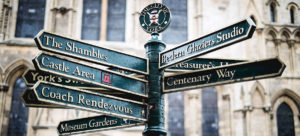
As you can see you will not be short of things to do while in York.
Image: mistertho/Shutterstock.com
Now we reach the part you have all been waiting for – all the lovely York attractions you can visit.
Historic Sights and Landmarks
York Minster is one of the most notable attractions in town. Built all the way back in the 7th century, this cathedral is phenomenal in terms of architecture. It is still in operation today so you may even be able to catch a service. Otherwise, the fantastic architecture makes for great Instagram pictures.
Go and see Clifford’s Tower, the only part of the original castle built in York that is still standing. The rest of it was burned down after the massacre of the Jews. This tower stands on the mound where the castle would once have overlooked the entire town. It has been meticulously restored and allows visitors most days, although Covid has affected this. If you want a stunning panoramic view of York, it is still worth climbing the hill.
York has its own Cold War Bunker and it is worth visiting. Run by English Heritage, this place is underneath the north end of town. It contains loads of futuristic plastic planning boards and looks like a secret government facility from the outside. The only problem with visiting it is finding the place. For some reason, it even contains a classroom. Spooky.
Galleries and Museums
Visit the National Railway Museum is built in York and has operated since the 19th century. It tells you everything you need to know about the railway, including how it was built. You will get to sit in old train carriages and even go on tours of signal boxes. Kids love it but adult trainspotters adore it more. They have free entry but do ask that you donate to the museum while you are there. The exhibit on the heroes of the railway is particularly promising.
The Jorvik Viking Centre was opened at the end of the last century and features all the information you ever wanted to know about the Danes, the Vikings, and the sacking of York. They didn’t just raid this town as they did in other places. In this town, they decided to move in and stay. York was part of the Viking’s extensive EU trading routes and would have seen countless travellers pass through its gates.
The York Castle Museum is another firm favourite attraction in town. It tells you the history of the town through the wars, of the confectionary businesses that took root here, and of the prison and asylum that used to be here. It has the Victorian street as part of it which you can walk down and get a real feel for how the city used to be.
Outdoor Attractions
York Maze is renowned for being fun for all the family. It’s also not massive, so you don’t worry about losing the kids in it and being stuck there till dinnertime. Classes as an amusement park, this theme park has loads of mister men characters making up the passageways. You can spend hours wandering around it, although more likely you can send the youngsters off to play while you sit on the sidelines at the café.
The Breezy Knees Gardens are a spectacular day out for those that love a wander among well-tended flower beds. It has many layers and different flower beds that all come with different names attached. For example, you have the country cottage garden and the Double Border. There are lots of different planting styles on display. It’s a real show of skill.
Sports and Recreation
York football team is known as York City FC. They are in the National League and play most weekends. They have a successful youth team and were established in 1908. They play at the York Community Stadium.
Golf clubs are not thin on the ground in York. You can play at the American Golf centre for a twist, join the Fulford Golf Club or attend the course at the Heworth Golf Club. If you want true country club golf, head out north to the Forest Park Club.
Shopping and Retail
There are plenty of places to shop till you drop in York. Go daft at the Designer Outlet on the south side of the city, check out the Coppergate shopping centre in the middle of town, to visit the Clifton Moor. You can also find retail park madness at the Monk’s Cross Shopping Centre.
Other Notable Attractions
There are loads of great attractions in York, so here are the few that we couldn’t fit in with more detail:
- We weren’t kidding about those city walls. They are splendid, masterful and will let you see the whole city in one walk.
- York’s Chocolate Story is a museum experience every person needs in their life.
- You can head to the York Air Museum to see the planes and hangars.
- Castle Howard is outside of town but worth seeing. They filmed ‘Brideshead Revisited’ here.
- See the Yorkshire Museum where they keep all the Roman finds from the area.
- There’s even a Roman column in the city centre you can see.
There’s something in York for everyone, but particularly for those that love their history!
How to Get There
Lastly, let’s talk about how you get there before we send you off into the great unknown.
By Road
Head northeast out of Leeds on the A64 to hit York.
By Rail
Head for York Train Station.
By Air
Leeds Bradford is your nearest international airport.
By Sea
If you can sail the Ouse, you can get to York.
Five Minute travel Guides
If you feel like you could stomach a few more of our travel guides, you will find them on our website. Don’t forget to follow us on Facebook, too, if you are in need of travel inspiration.
[i] https://primaryfacts.com/3094/york-facts-and-information/


